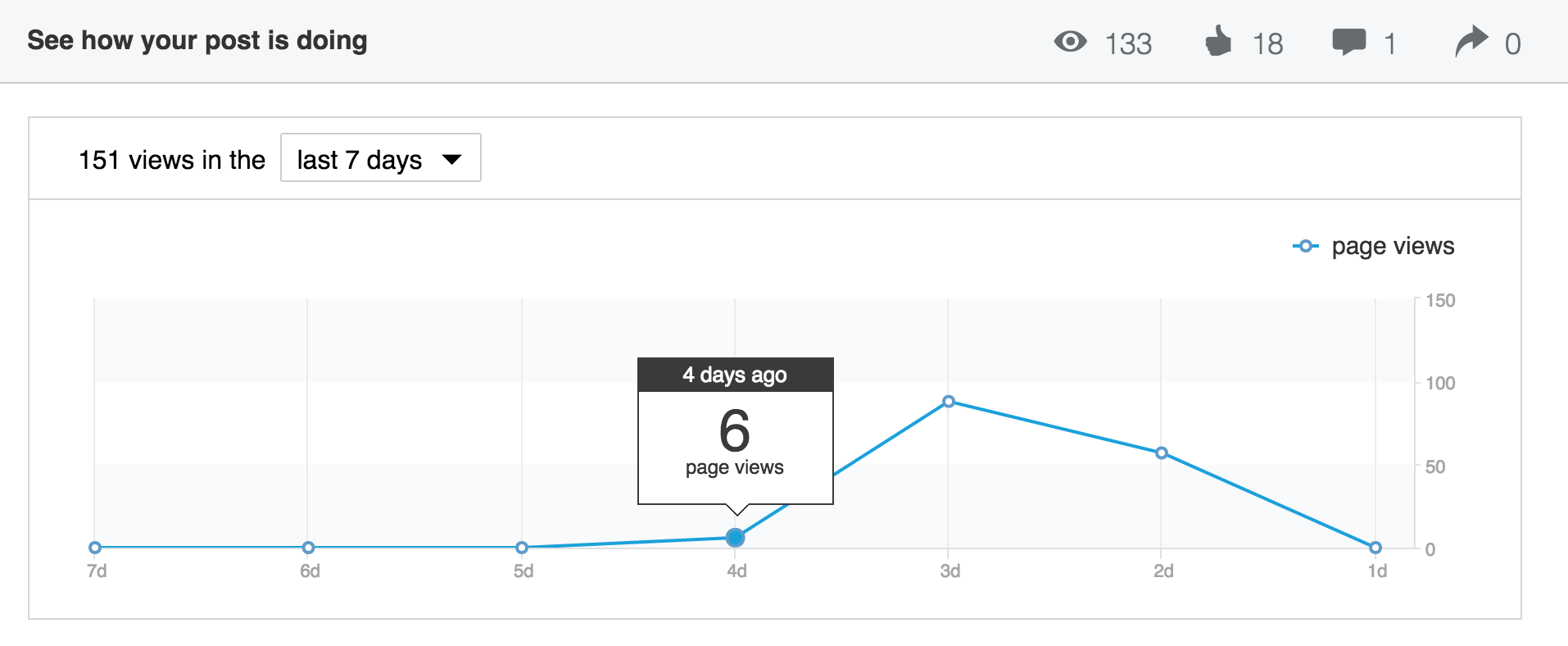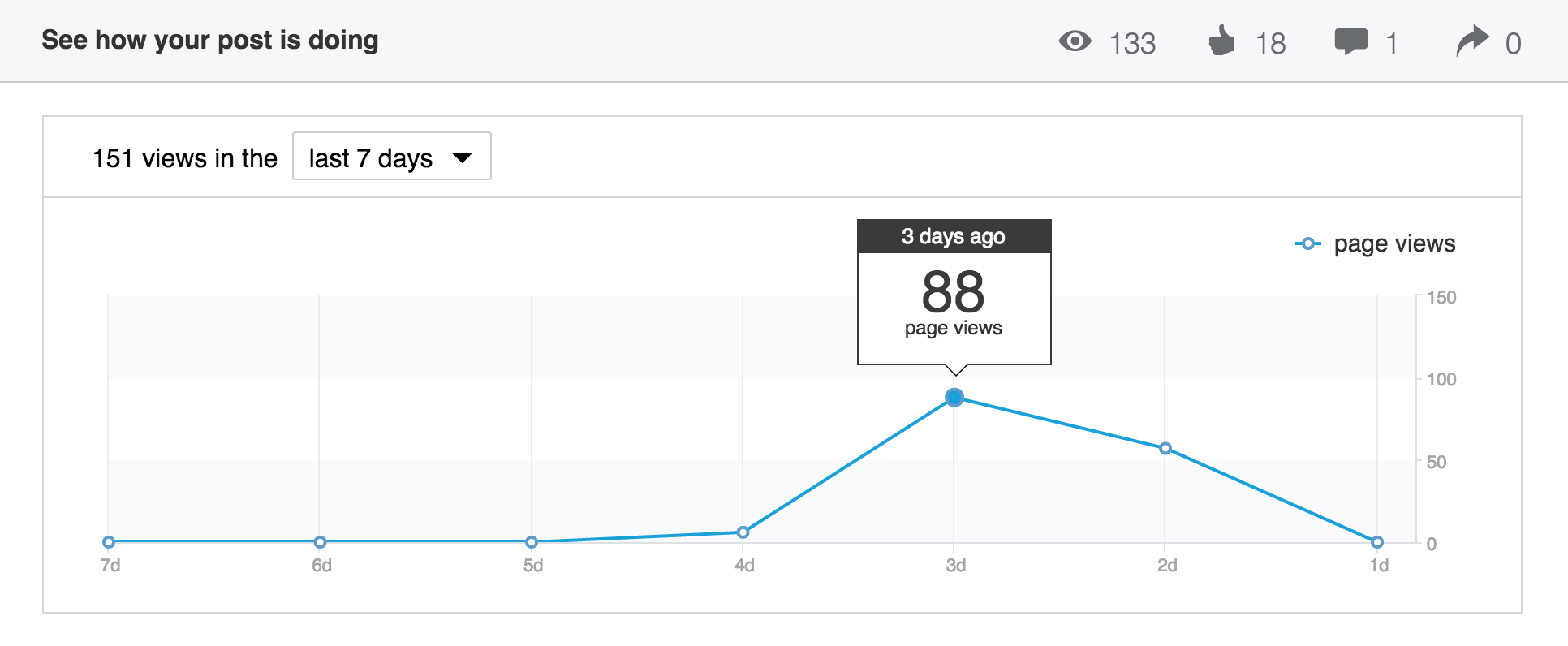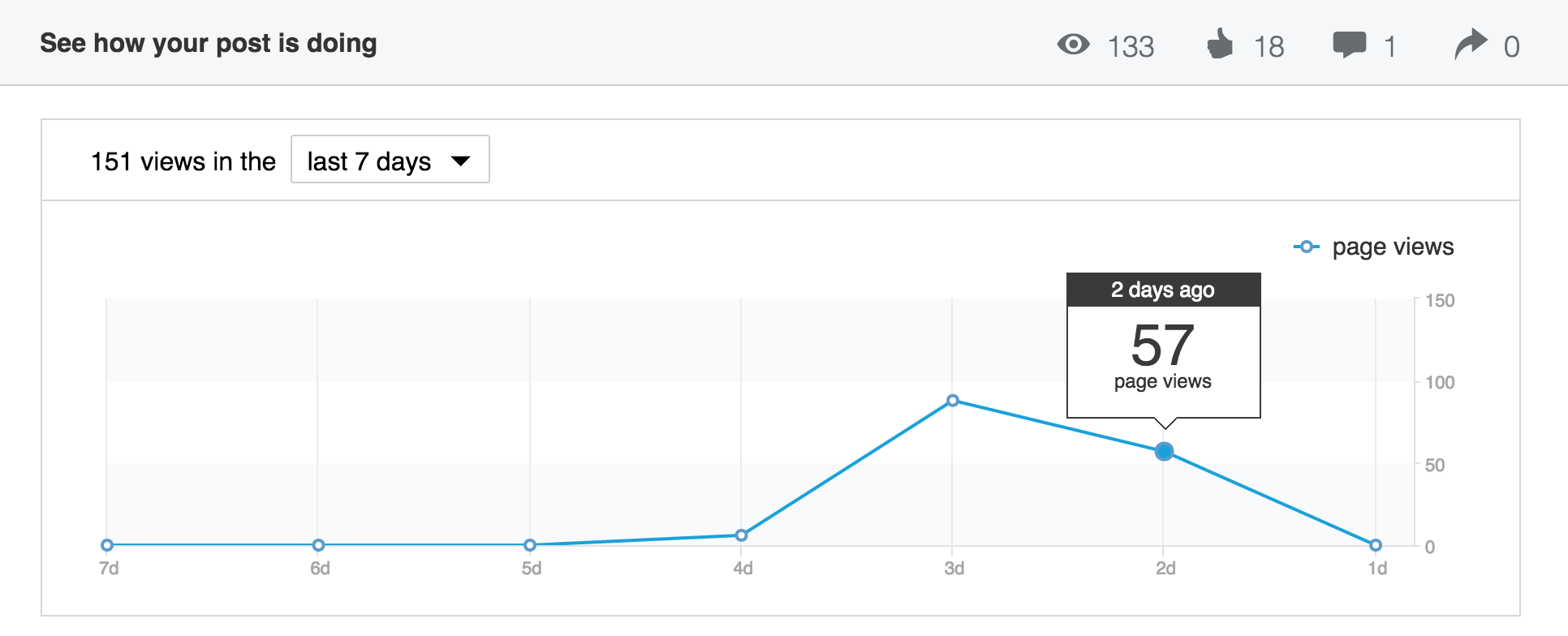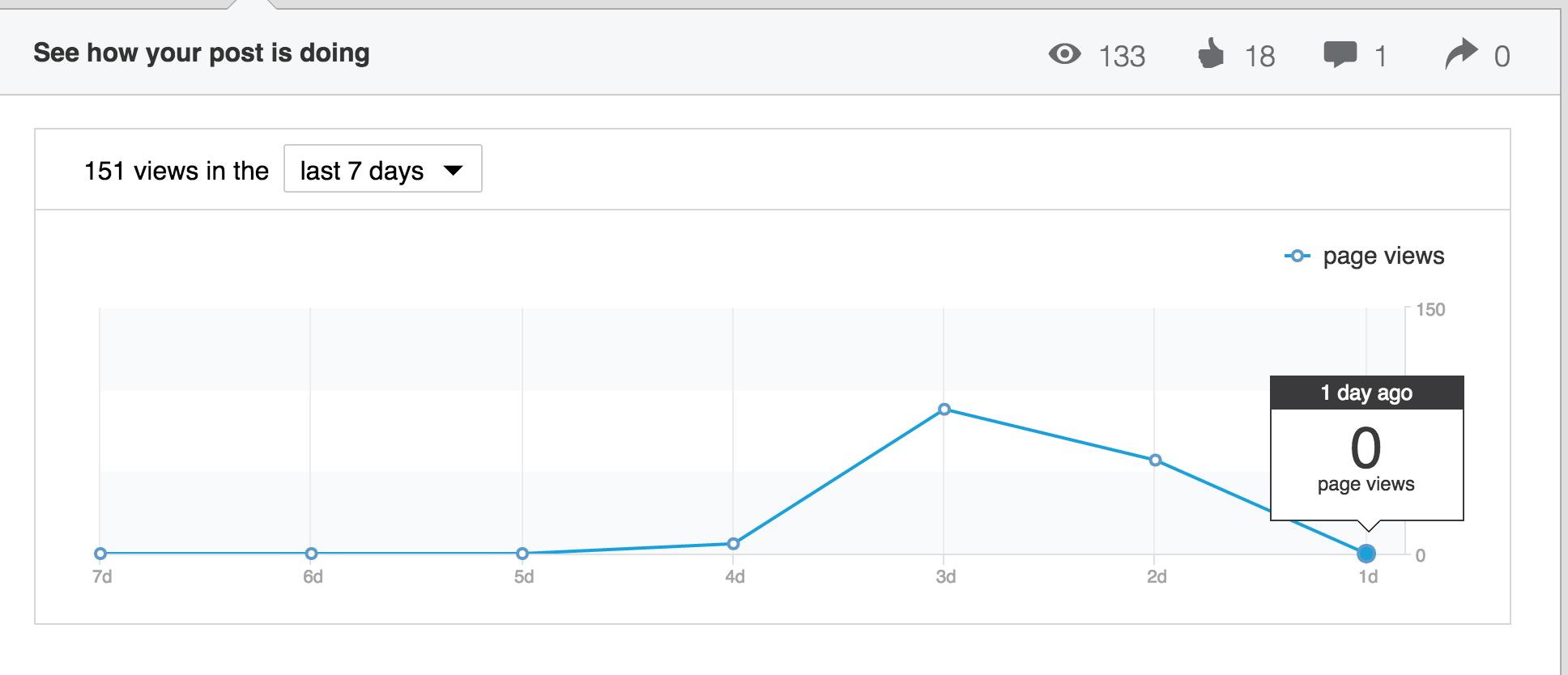As a blogger on Linked In, I am experimenting on different aspects of blogging including understanding the analytics of the blog reach. Linked in provides a very basic and simple UI page to understand the trend of a certain blog post.
By the first look at it, a blogger will get to know
- The number of views
- The number of likes
- The number of comments
- The number of shares
The aggregated number of views for different time periods, Last 7 days, Last 15 days, Last 30 days etc can be seen as part of the same page. While I love the simplicity of this entire page, there is a very interesting observation I made in the analytics of the two posts.
The number of views is inconsistent during that initial 15-30 days after the post is published.
The rolling count eventually gets to the correct number. However, this small problem affects the experience for view count for the first two weeks.
Here is the example statistic on my homepage of the linked in, as of Aug 11th.
At the same time, here is the view count on the Analytics Page:
This is a snapshot on Aug 11th, the actual total is 151(6+88+57).
The top view count shows a different number(133) and the homepage view shows a different number(127). The actual count is a different number(151).
I am sure all these totals were mathematically correct by the software services feeding these pages, based on reasons unseen to the user. Once the view per day started decreasing for my post, the above count starting becoming more and more consistent.
Of course, this is a minor glitch compared to the overall experience using Linked in and the reach Linked in posts provide.
Consistency is an important aspect of the user experience.
I’ve seen some seasoned bloggers on Linked in use this statistic to provide more insights on the analytics of their posts, so I can’t help but wonder whether they faced similar glitches, or since the view count is comparatively higher, perhaps this difference is very negligible.
The little things do catch the user’s eye!





